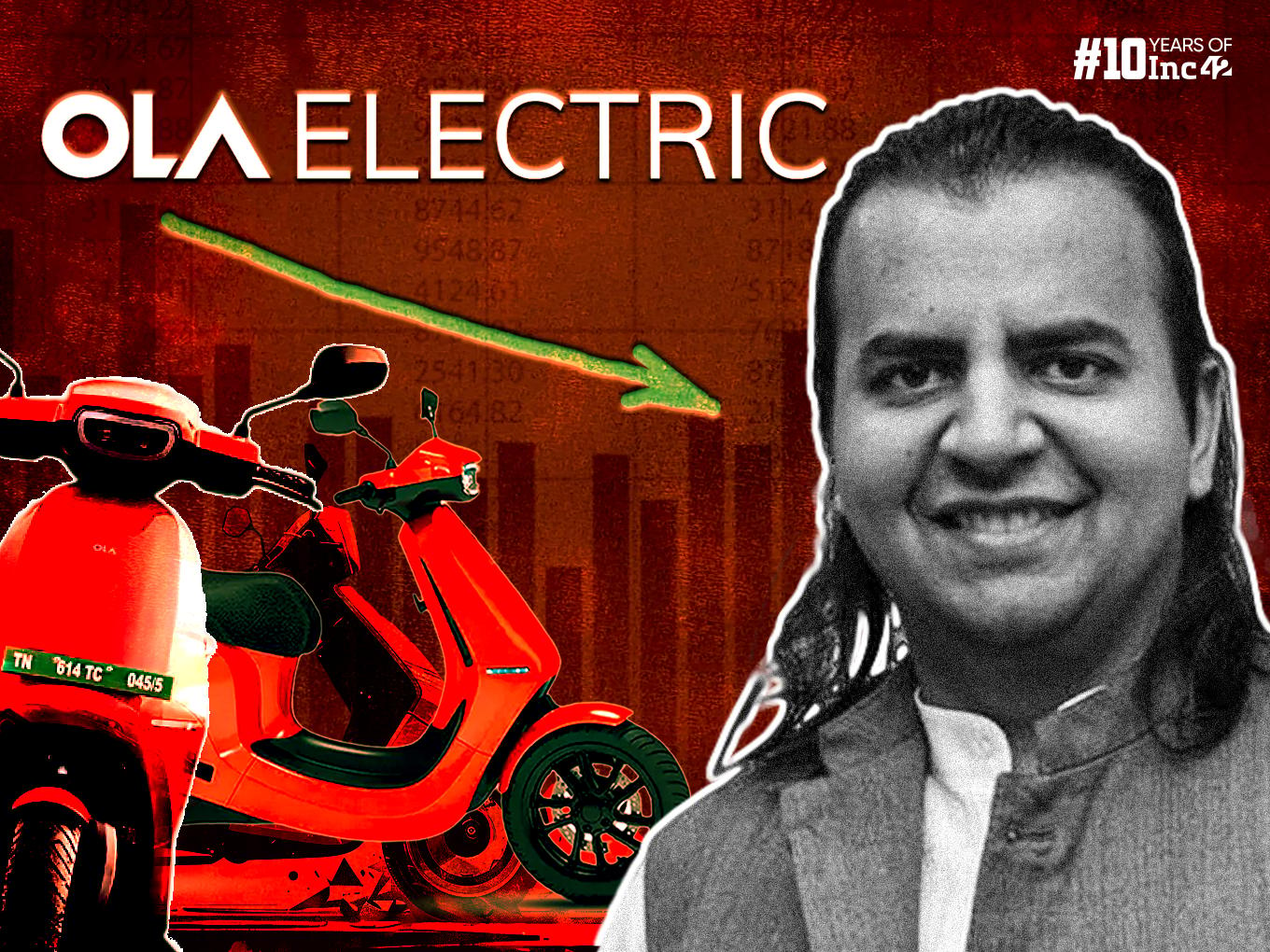
Even with service complaints stacking up, Ola Electric will focus on new models and new stores to claw back market share Ola Electric has always run on the fast track in India’s electric vehicle race—but after going public, the Bhavish Aggarwal-led company is possibly coming to the realisation that it has to curb its enthusiasm a tad bit. As its financials this week show, Ola Electric’s rapid growth before the listing has suddenly come to a halt after the stock market debut. On a QoQ basis, the numbers do not make for good reading , but as Aggarwal accepted the company has to fix its service quality to turn this around.
But at the same time, Aggarwal has made it clear that speed required to launch new products is non-negotiable. Even with service complaints stacking up, Ola Electric will focus on new models and new stores to claw back market share. Many are asking: is this a gamble worth taking at this moment? We look to answer this Sunday, right after a look at the top stories from our newsroom: There’s little doubt that Ola Electric’s vision is grand — the company is targeting 2,000 stores from around 800 today, and more than 10,000 partners by March 2025.
These numbers as usual look great on paper, but in reality Ola Electric needs to focus especially when service network and quality don’t match the pace of product rollouts, as many of Ola Electric’s customers have claimed. Ola Electric’s addressed the concerns around complaints and the service network at the Q2 earnings call on Friday. While Aggarwal did not reveal how many complaints Ola Electric gets every month, he mentioned that the reported 80,000 figure is not bad given the scale of the company’s operations.
He added that more than two-thirds of complaints are minor issues, where no parts were changed, while some are accident cases and there are some which are warranty claims. He added that currently, 80% of service requests are being addressed within 24 hours. Aggarwal was also unfazed by the questions around the quarterly dip in numbers The company narrowed losses by 5.
5% on a YoY basis, but its loss widened almost 43% from INR 347 Cr in the June quarter amid a decline in EV sales. Similarly, operating revenue zoomed almost 39% YoY to INR 1,214 Cr in the quarter, but slumped 26.1% on a sequential basis when compared to Q1.
Till FY24, its Ola S1 Pro model earned it the highest amount of revenue. But newer models are on the anvil. Aggarwal said Q2 has always been a bit of a dip over Q1 for Ola Electric, even when you look at the FY24 numbers.
“There is a seasonality also in the industry, and also generally whatever FAME reductions the government does is around the start of Q1 or the end of Q1. In Q1 FY25, we made deliveries for a lot of customers who had booked in March which was FY24 due to the season changeover.” Ola’s market penetration is impressive—EV adoption hit 21.
4% in India by September 2024—but this is a crowded space. Customers don’t just buy into a product, they buy into the entire experience, at least that’s what Ola Electric’s rival Ather Energy’s pitch has remained. Ola Electric’s focus remains on the affordable segment.
But price alone isn’t the only draw. And if Ola wants to cross over to the premium segment, customers will expect not just a sleek, high-performance scooter but also premium experience across the board from sales to servicing. Without that, Ola risks losing high-value customers to rivals who focus on the service network from the get-go, as we reported a few weeks ago.
Nevertheless, Ola Electric is pushing hard to stay ahead of the curve with upcoming models like the S1 Gen 3 and Roadster motorcycle. The more Ola expands into new models, the more complex its service infrastructure needs to become — and this is a constant battle for OEMs when they are playing the aggressive game. A good example is Maruti Suzuki which built its sales empire around the reputation of its service network.
Competitors like Bajaj and TVS are already strengthening their service networks while keeping pace with product development. For Ola to remain competitive, it needs to do more than launch new scooters and bikes — it needs to deliver a service experience that can alleviate the ire of its customers, many of whom have been waiting for months for resolutions, if reports are to be believed. Ola Electric has set its sights on a bold future.
With rapid expansion, a strong market share, and aggressive product launches, it’s clear that the company isn’t about to slow down anytime soon. But the question remains: can it keep this momentum going without the operational hiccups getting in the way? Plus, there’s the issue of profitability. As per, BofA Global Research, Ola Electric is not likely to get to profitability before FY27.
Goldman Sachs’ research note on Ola Electric also estimates the company will remain loss-making on a consolidated level till FY27, or March 2027. The Ola Electric stock has plummeted to an all-time low and below the listing mark, finishing the week at INR 72.74.
Ola Electric’s future hinges on two crucial factors — its ability to turn the narrative around in relation to the poor servicing and the lack of profitability, which is directly linked to the EV sales volume. The company’s ability to scale its service operations while maintaining product innovation will determine whether it can stay ahead of its competition. But if Ola doesn’t find a way to resolve its service bottleneck quickly, it might just find that speed isn’t enough to win the race.
Can Ola Electric turn its service issues around in time to retain its lead in an increasingly competitive EV market?.














